SpaceX launches 60 Starlink internet satellites, sticks rocket landing
CAPE CANAVERAL, Fla. — SpaceX delivered a new batch of its Starlink satellites into orbit today (Sept. 3) and nailed a rocket landing, following a few delays.
A two-stage Falcon 9 rocket carrying a full load of 60 Starlink satellites lifted off at 8:46 a.m. EDT (1246 GMT) from Pad 39A at NASA’s Kennedy Space Center in Florida. The booster's first stage came back to Earth about 9 minutes after launch, landing on one of SpaceX's drone ships in the Atlantic Ocean.
This was the third attempt to get this particular mission off the ground, following weather and data-review delays. The launch marks the first Starlink mission this month and SpaceX's 16th mission so far in 2020. The company’s fleet of flight-proven boosters has been busy this summer, with the California-based rocket builder reaching a new milestone on its previous Starlink flight: launching and landing the same first-stage booster six times.
Related: SpaceX's Starlink satellite megaconstellation launches in photos
After a weekend of stormy weather, it was nothing but sunny skies and clear weather for a picture-perfect launch. Onlookers cheered as the rumble of the engines roared overhead.
"What a beautiful sight," SpaceX engineer and launch commentator Kate Tice said after the satellites floated away after a smooth deployment.

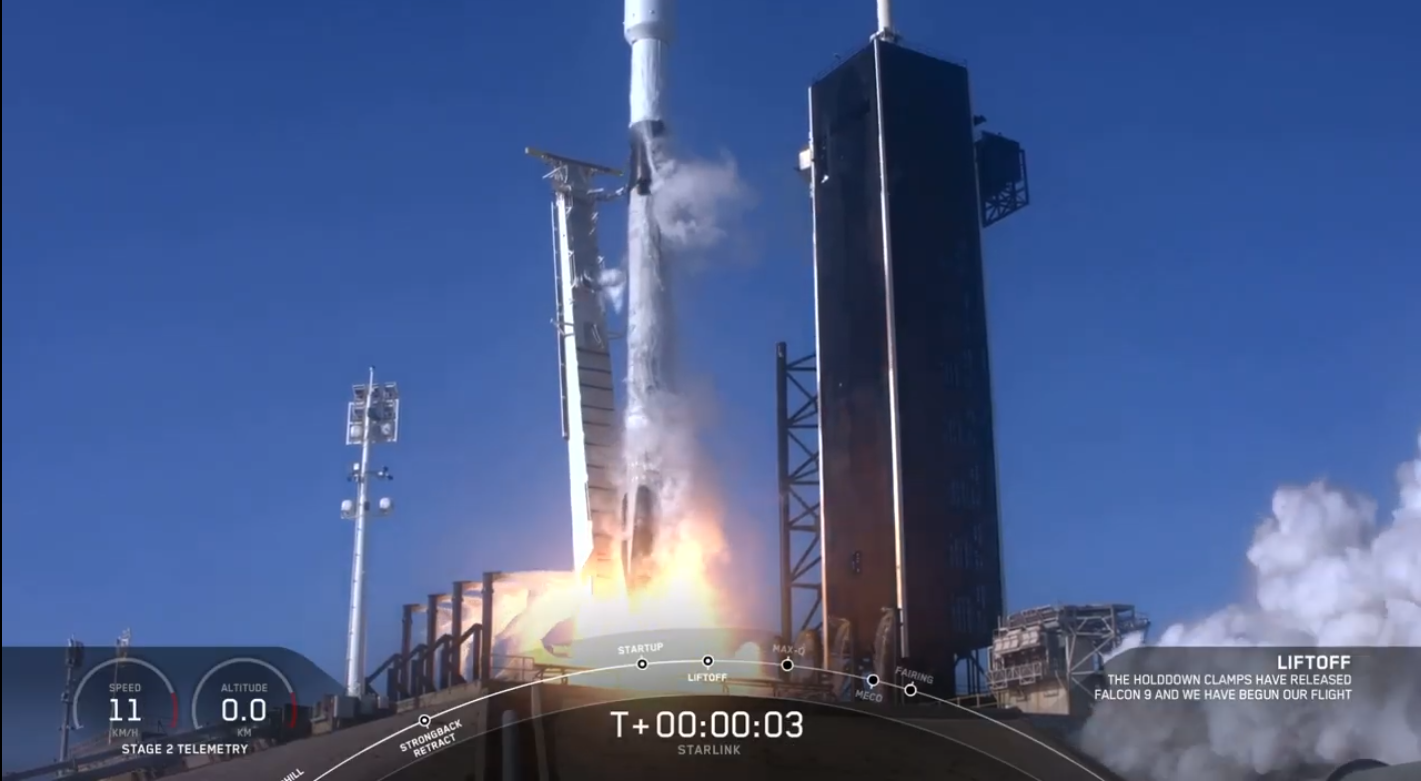
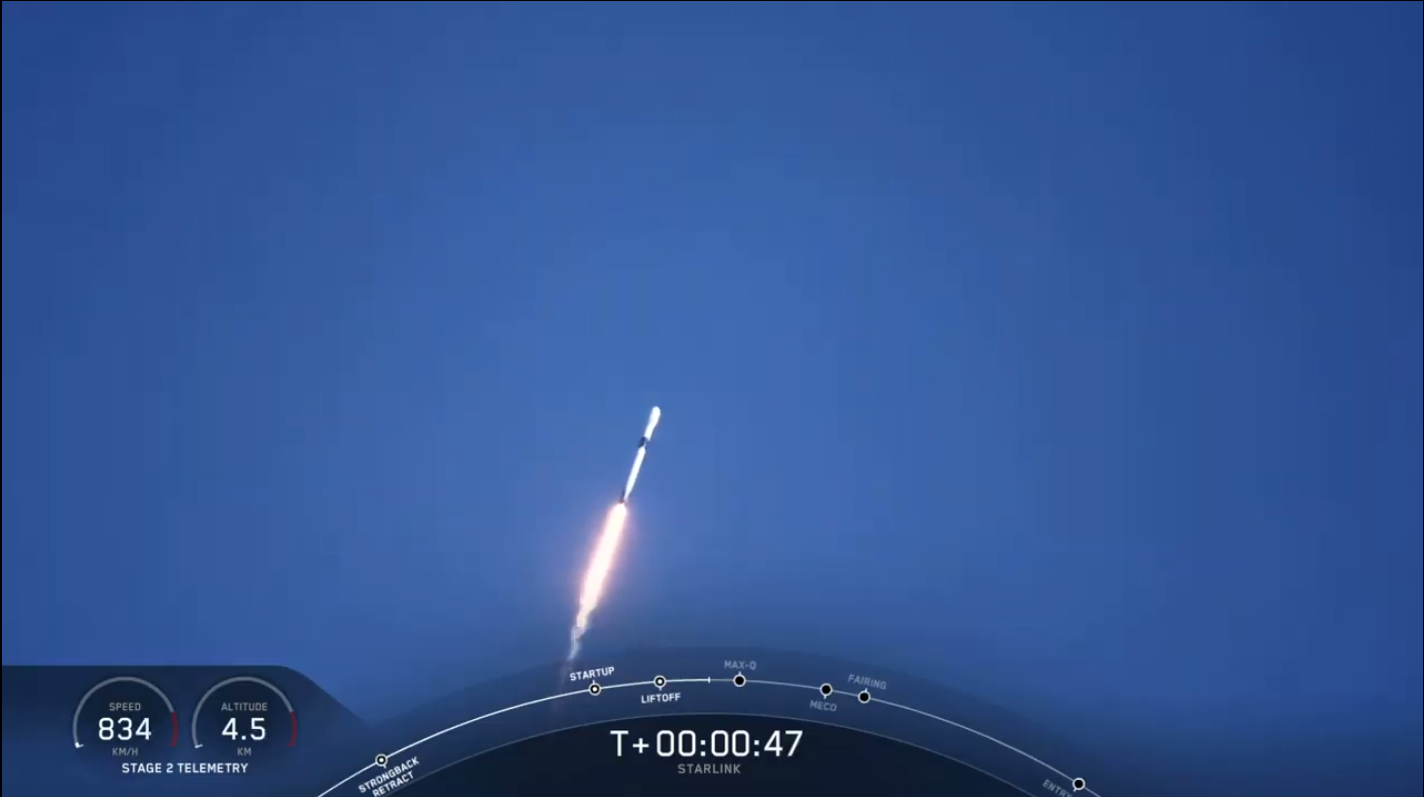
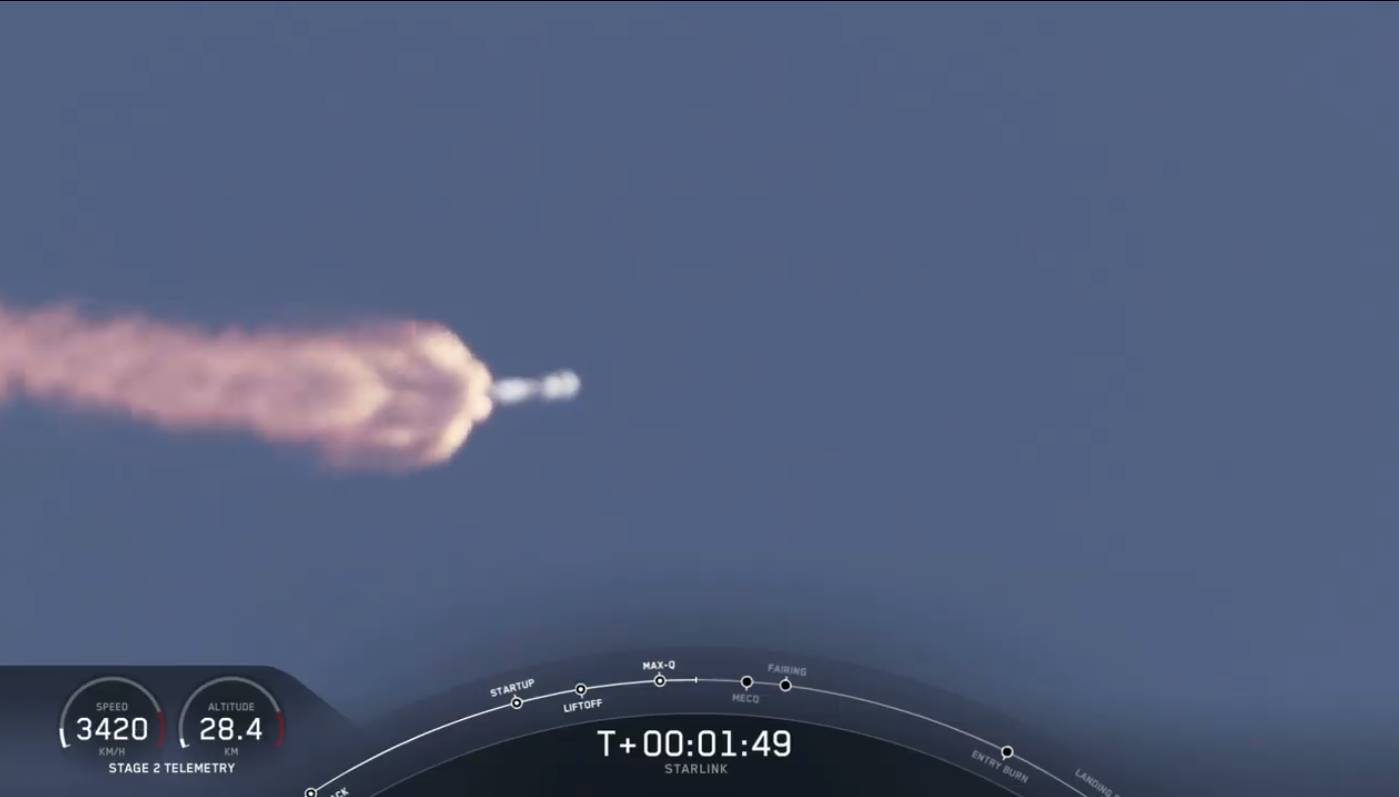
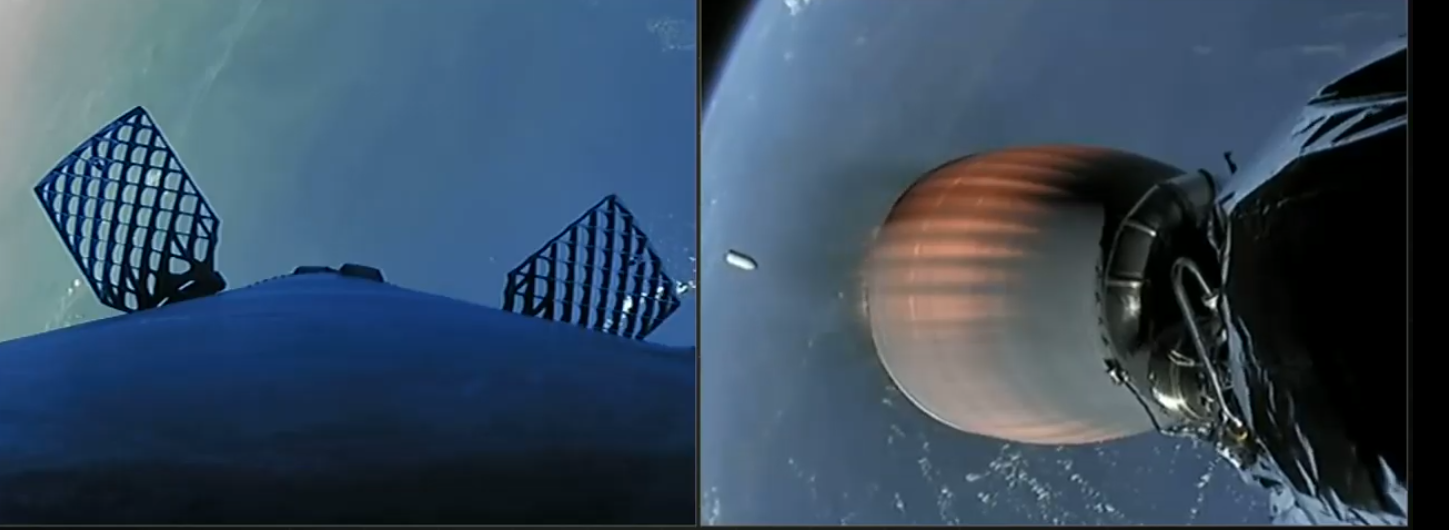
SpaceX had initially planned to conduct a launch doubleheader on Sunday (Aug. 30), with two different Falcon 9s launching from the company’s Florida-based launch pads on the same day — a first for the private spaceflight company. However, those plans were thwarted by poor weather conditions produced by typical summertime thunderstorms in the area.
Get the Space.com Newsletter
Breaking space news, the latest updates on rocket launches, skywatching events and more!
The weather was so bad over the weekend that reporters were not able to set up remote cameras to photograph either launch. Typically, SpaceX allows members of the media to go out to the launch pad (prior to liftoff) to set up cameras close to the rocket that will take photos during launch.
Photographers have a small window of time to set up cameras, so as not to interfere with prelaunch activities. Unfortunately, for both the Starlink setup and the SAOCOM-1B mission, weather officers detected lightning around the pad and could not permit anyone to be outside, so no cameras were set up.
But the weather delay brought new hope for the Starlink mission (and new opportunity for photos), as the updated forecast dramatically improved and the Falcon 9 was able to get off the ground.
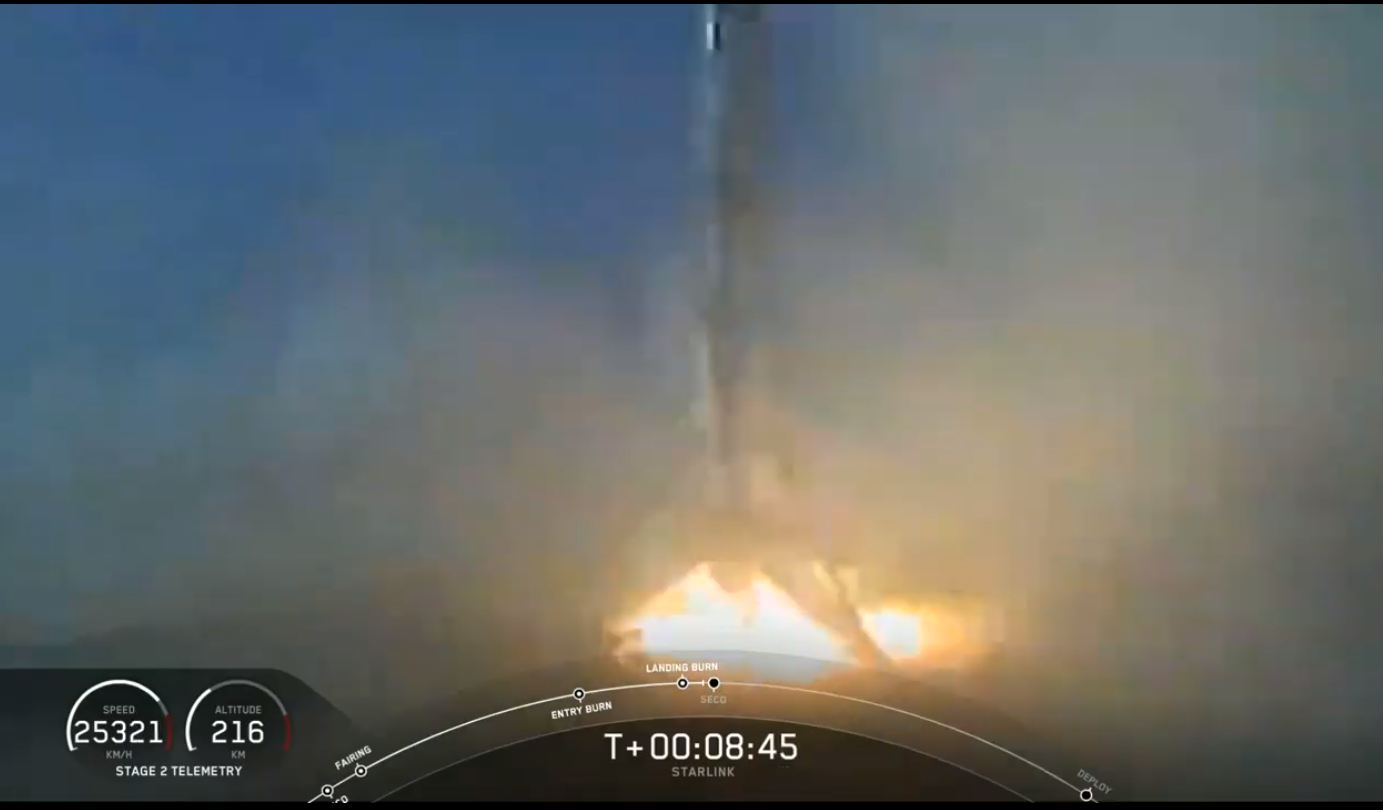
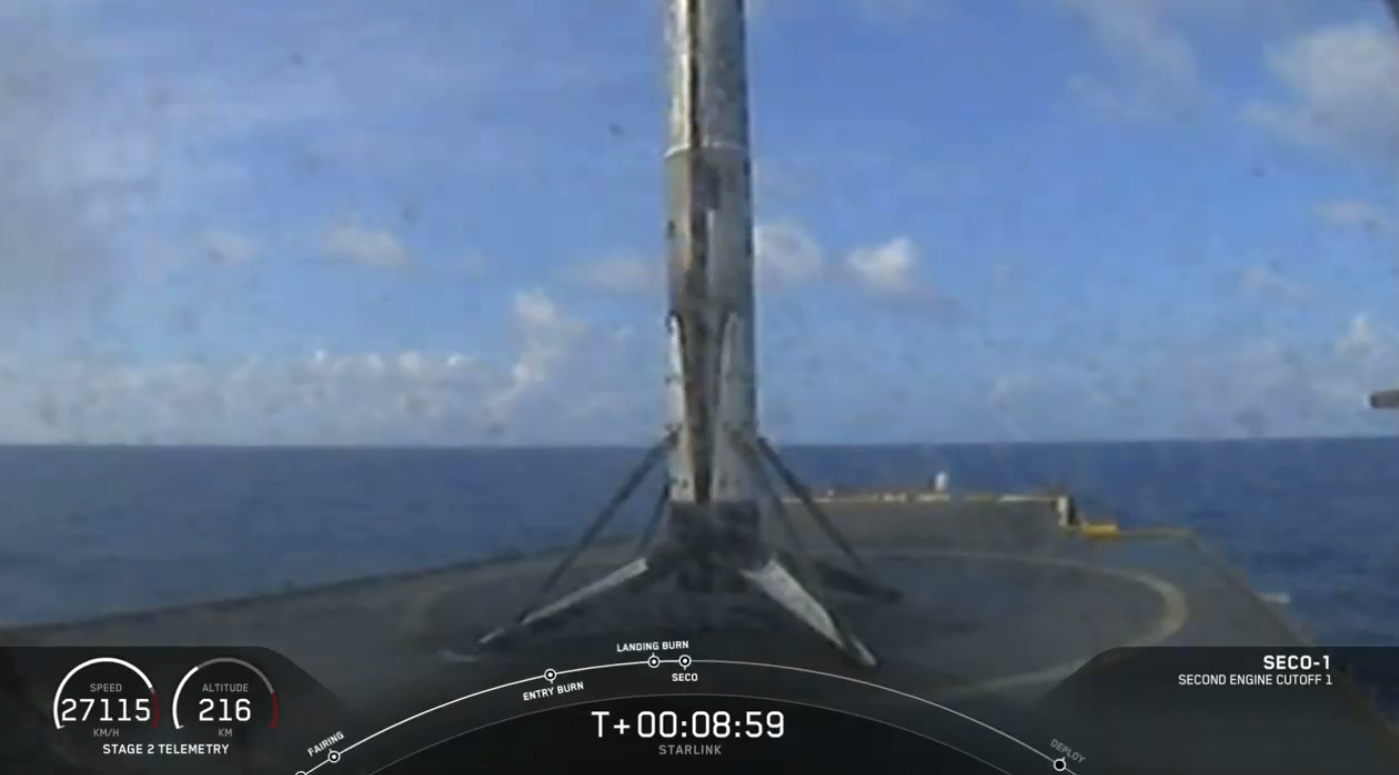
A frequent flier
The booster featured in today's flight is one of SpaceX's newest. Designated B1060 (an internal identifier), the booster first flew a little more than two months ago when it lofted the upgraded GPS III satellite for the United States Space Force.
That launch, which blasted off from Space Launch Complex 40 at Florida's Cape Canaveral Air Force Station on June 30, marked the first mission for the U.S. military in which SpaceX was permitted to recover its first-stage booster. Historically, missions like GPS III have involved expendable boosters that SpaceX discarded in the ocean. However, the company was granted approval to land its booster at sea for that one.
B1060 is the newest addition to SpaceX's fleet of frequent fliers. Approximately nine minutes after liftoff, the first stage made another landing, touching down on the deck of the SpaceX drone ship "Of Course I Still Love You."
The landing today marked the 60th recovery of a Falcon first stage. SpaceX recovered its first booster in 2015 and has worked to make booster landings look easy. Earlier this year, SpaceX upgraded its second drone ship, "Just Read the Instructions," and started using it to help catch boosters out in the Atlantic Ocean.
That ship, which was first deployed on the West Coast, has enabled SpaceX to increase its launch cadence and recover more rockets.
The megaconstellation expands
SpaceX hopes its Starlink megaconstellation will provide global broadband coverage, in particular to people in rural and remote areas. To connect to the fleet of broadband satellites, SpaceX has developed a small terminal (roughly the size of a laptop) for users on the ground.
Including the 60 satellites SpaceX launched on this mission, which marks the 12th Starlink flight since May 2019, SpaceX has delivered more than 700 of the internet-beaming satellites into space. Company founder and CEO Elon Musk has said that there need to be between 500 and 800 satellites in orbit before service can begin to roll out.
But SpaceX has been speed-testing its burgeoning space-based internet service, and during the mission's webcast, Tice said that data collected so far indicates that the service will provide fast download speeds.
SpaceX’s Starlink megaconstellation is already the largest fleet of satellites in the world, but hundreds more will be launched in the coming months as the company works to fulfill its initial network of 1,440 satellites. To that end, company representatives have said that roughly six of the flat-panel satellites are built each day at its facilities in Washington state, and they estimate that 60-satellite Starlink missions could launch every two to three weeks.
The U.S. Federal Communications Commission granted SpaceX approval to launch as many as 12,000 Starlink satellites to low Earth orbit, providing customers with high-speed, low-latency internet.
But not everyone is thrilled about SpaceX’s promise to connect the world. The project has been a thorny subject for astronomers and skywatchers since the very first satellite was deployed. That’s because the Starlink satellites were much brighter than anyone expected. When they first reach orbit, they look like a train of bright dots parading across the night sky (though that dramatic scene dissipates as the satellites head to their operational orbits).
Astronomers need dark skies in order to image distant galaxies and stars and other celestial objects. Scientists around the globe are concerned that the bright satellites will inhibit scientific observations. To help mitigate this issue, SpaceX has been working with the astronomy community to come up with solutions.
This is the second batch of Starlink satellites now that are outfitted with a special visor — called a sunshade — to reduce their apparent brightness. The visor works by preventing sunlight from reflecting off the shiniest parts of the satellites, such as the antennas.
In advance of rolling out its internet service, SpaceX has started offering prospective users the chance to test out its Starlink network before commencing commercial service. Select users have already started beta-testing the service now, but many more satellites could end up launching before Musk and SpaceX connect the world.
Fairing recovery efforts
In 2015, SpaceX changed the rocket game by proving it can reuse the most expensive portion of the rocket: the first stage. According to Musk, this massive piece of hardware accounts for most of the Falcon 9's total price tag. But SpaceX isn’t satisfied. In an effort to further reduce launch costs, the company has outfitted two boats with giant nets that help it recover and reuse its payload fairings, catching them as they fall back to Earth.
Historically, the clamshell-like hardware (also known as the rocket's nose cone) has been discarded in the ocean, never to be used again. But to build upon its reusability efforts, SpaceX has outfitted each piece with the tools it needs — parachutes and software — to gently land in the ocean. (SpaceX fall back to Earth in two pieces.)
SpaceX wants to limit fairings' exposure to seawater, to ease reuse of this critical piece of hardware. Together, the two fairing halves cost about $6 million, which is a hefty sum to save if SpaceX can refurbish and reuse them. To that end, SpaceX generally sends its twin vessels — GO Ms. Tree and GO Ms. Chief — out each launch to either snag the fairing pieces as they fall or scoop them out of the water shortly after landing.
Simply having a giant net does not mean that one (or both of the boats) will actually be able to make a catch, however; for example, weather also plays a role.
SpaceX had to split up its dynamic net-equipped duo over the weekend when the company had two launches planned on the same day. GO Ms. Chief was able to scoop both pieces of the SAOCOM-1B fairing out of the ocean and safely deliver them back to SpaceX’s facilities at Port Canaveral.
The vessel then headed back out to sea, joining its partner, already stationed out in the Atlantic and awaiting today’s Starlink mission. All recovery efforts (either a catch or a scoop) are expected to occur approximately 40 minutes after liftoff.
Follow Amy Thompson on Twitter @astrogingersnap. Follow us on Twitter @Spacedotcom or Facebook.
Join our Space Forums to keep talking space on the latest missions, night sky and more! And if you have a news tip, correction or comment, let us know at: community@space.com.

Amy Thompson is a Florida-based space and science journalist, who joined Space.com as a contributing writer in 2015. She's passionate about all things space and is a huge science and science-fiction geek. Star Wars is her favorite fandom, with that sassy little droid, R2D2 being her favorite. She studied science at the University of Florida, earning a degree in microbiology. Her work has also been published in Newsweek, VICE, Smithsonian, and many more. Now she chases rockets, writing about launches, commercial space, space station science, and everything in between.









